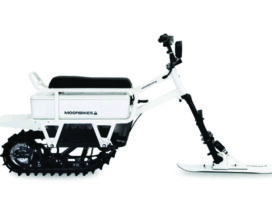Automotive manufacturers work to reduce weight to improve vehicle performance and in the case of brake rotors, lighter is better for acceleration, reliable stopping, and mileage. NASA has patented technology to accomplish that and more, as described in their latest issue of ‘Spinoff’. The revolutionary brake disc design is at least 42% lighter than conventional cast iron rotors, with performance comparable to much more expensive carbon-ceramic brakes. Reducing the mass of its wheels means a vehicle will use less energy to brake and accelerate. Conventional brake discs are heavy because they consist of two metal plates cooled by air circulating between them. The design is inefficient because it is the outside surfaces that are heated by friction with the brake pads, but the air cooling takes place on the inside surfaces, where the plates face each other. Unlike conventional brakes that can overheat and potentially fail, this new brake design can dramatically improve dependability. It also may offer a mechanical solution to a serious environmental pollutant – toxic nanoparticles. Orbis Brakes Inc. has licensed the technology as part of NASA’s technology transfer program. It is offering the NextWave model rotor as an after-market disc brake for high-performance cars like the Ford Mustang and some Tesla models.
Monday , 22 July 2024
 TrafficInfraTech Magazine Linking People Places & Progress
TrafficInfraTech Magazine Linking People Places & Progress

